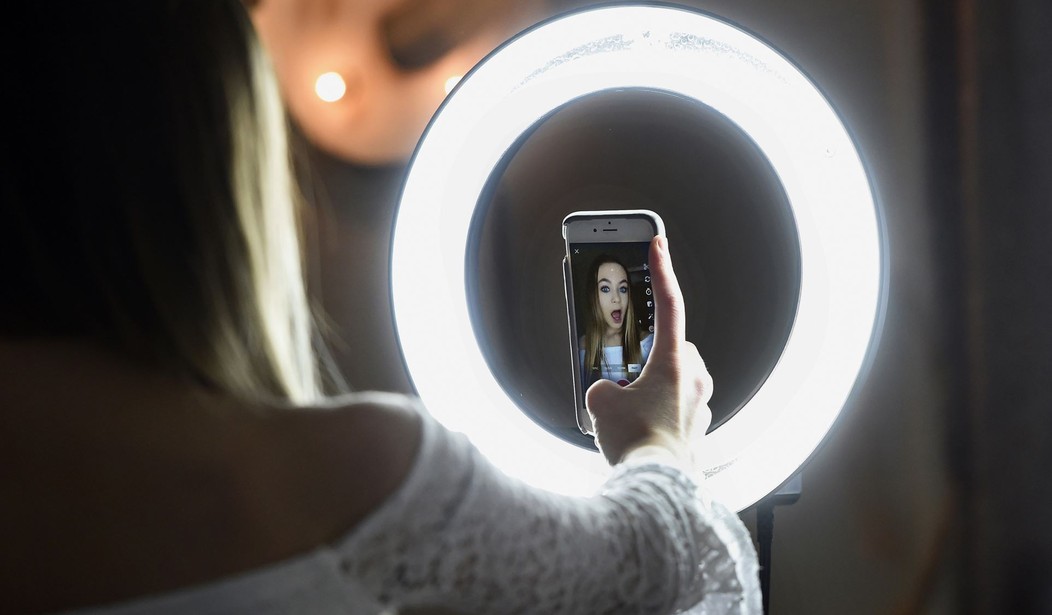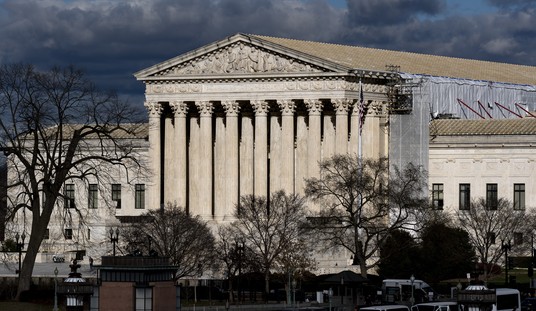There was a pretty dramatic story published by NBC News Wednesday about a surging mental health crisis among teens. Teens are said to be overwhelming local ERs which aren’t really equipped to provide the level of support that seems to be needed.
“The scope of this problem is really great,” said Dr. Mohsen Saidinejad, a professor of emergency medicine and pediatrics at the David Geffen School of Medicine at the University of California, Los Angeles. “But our ability to solve it is not there.”…
Dr. Willough Jenkins, medical director of emergency and consultation liaison psychiatry at Rady Children’s Hospital in San Diego, is on the front line of the surge.
She said that the number of kids seeking psychiatric emergency care in her ER has grown from approximately 30 a month in recent years to 30 a day.
“The volume is astronomical, and I don’t know that people fully understand how many people are struggling,” said Jenkins, who was not involved with the new policy statement…
“The bulk of these children are coming in with depression, anxiety and trauma,” Jenkins said.
Regular readers know we’ve been covering this issue for a while now. Academic and author Jonathan Haidt has highlighted the crisis and argued it appears to be connected to the adoption of smart phones by young people and the near ubiquity of social media that goes with that. The CDC has also confirmed teens are struggling with mental health, especially teen girls.
Almost 3 in 5 teenage girls reported feeling so persistently sad or hopeless almost every day for at least two weeks in a row during the previous year that they stopped regular activities — a figure that was double the share of boys and the highest in a decade, CDC data showed.
Girls fared worse on other measures, too, with higher rates of alcohol and drug use than boys and higher levels of being electronically bullied, according to the 89-page report. Thirteen percent had attempted suicide during the past year, compared to 7 percent of boys.
There’s also an interesting political element to this discussion. It turns out that the kids struggling the most tend to be liberal/progressive teens. NY Times columnist Michelle Goldberg initially planned to write an article about this trend claiming that Donald Trump was driving progressive teens crazy but after researching the issue (to her credit) she concluded that wasn’t what was happening. In fact, the problem the NBC News story above is highlighting is one that has been building since before Trump was president.
One interesting take on this problem came from Matt Yglesias who suggested that at least part of the problem was that adult progressives were modeling a kind of cultivated fragility.
Some of it might be selection effect, with progressive politics becoming a more congenial home for people who are miserable. But I think some of it is poor behavior by adult progressives, many of whom now valorize depressive affect as a sign of political commitment…
Life is complicated, and this is difficult. But for a very wide range of problems, part of helping people get out of their trap is teaching them not to catastrophize. People who are paralyzed by anxiety or depression or who are lashing out with rage aren’t usually totally untethered from reality. They are worried or sad or angry about real things. But instead of changing the things they can change and seeking the grace to accept the things they can’t, they’re dwelling unproductively as problems fester.
Haidt took this idea and ran with it in his own piece attempting to explain the partisan nature of the findings. His conclusion is that progressive culture online gravitated toward a kind of identity formulation in which everyone was constantly in danger of harm from other people’s words. He quotes an author, Angela Nagle, who has written about the teen progressive culture that developed on Tumblr.
There was a culture that was encouraged on Tumblr, which was to be able to describe your unique non-normative self… And that’s to some extent a feature of modern society anyway. But it was taken to such an extreme that people began to describe this as the snowflake [referring to the idea that each snowflake is unique], the person who constructs a totally kind of boutique identity for themselves, and then guards that identity in a very, very sensitive way and reacts in an enraged way when anyone does not respect the uniqueness of their identity.
And this mostly female, mostly left-wing culture of fragility was opposed by an online culture of mostly male, more conservative people on sites like 4chan. Mutual hatred helped reinforce these opposite views:
The communities involved in gender activism on Tumblr were mostly young progressive women while 4Chan was mostly used by right-leaning young men, so there was an increasingly gendered nature to the online conflict. The two communities supercharged each other with their mutual hatred, as often happens in a culture war. The young identity activists on Tumblr embraced their new notions of identity, fragility, and trauma all the more tightly, increasingly saying that words are a form of violence, while the young men on 4chan moved in the opposite direction: they brandished a rough and rude masculinity in which status was gained by using words more insensitively than the next guy. It was out of this reciprocal dynamic, the experts on the podcast suggest, that today’s cancel culture was born in the early 2010s. Then, in 2013, it escaped from Tumblr into the much larger Twitterverse. Once on Twitter, it went national and even global (at least within the English-speaking countries), producing the mess we all live with today.
Haidt concludes the progressives over time came to believe three great untruths:
They came to believe that they were fragile and would be harmed by books, speakers, and words, which they learned were forms of violence (Great Untruth #1).
They came to believe that their emotions—especially their anxieties—were reliable guides to reality (Great Untruth #2).
They came to see society as comprised of victims and oppressors—good people and bad people (Great Untruth #3).
And I would add a fourth point to this which is clearly connected to and built upon the other three: These young progressives came to believe their oppressors (those doing the harm) should be punished to make the harm stop.
So you have an online culture war between edge lords and snowflakes which forms a new progressive worldview (untruths 1-3) and that worldview spreads and breaks out in the form of online mobbing and cancel culture. In practice it looks like left-wing college students demanding safe spaces and right-wing people seeking every opportunity to show up at left-wing universities to trigger them.
But there are probably downsides to both sides in this battle. On the right you have lonely, discouraged men who wind up turning to guys like Jordan Peterson or, unfortunately, Andrew Tate for advice. At their most extreme they become angry incels furious that no one wants to have sex with them.
On the left you have teens, especially girls, who have been trained into a kind of catastrophizing in which everything is a crisis of incipient harm all the time (their identity, other people’s identities, the environment, etc). At their most extreme, these are the teens winding up in the ER for a mental health crisis on any given day.
If this outline is even roughly accurate, and I’ll stipulate we’re a long way from proving it is, you have to wonder if part of the problem here is that boys and girls both spend too much time being cultured into these opposing identity groups online and too little time being awkward teens meeting the opposite sex in the real world. Maybe there’s a reason for that.
Just thinking out loud but consider how social media raises the stakes of every real world social interaction. Passing moments of humiliation (which we’ve all experienced) can now be filmed, photographed or recounted for the amusement of untold others. Social existence was hard for teens in the 1950s (think James Dean in Rebel Without a Cause) and it was still hard in the 80s when I was in high school (think the Breakfast Club or almost any John Hughes movie).
But pity the poor teens of today. Now they’ve got an entire meta layer of social media commentary floating along on top of all of that teen angst and confusion. The moment when incipient adults are at their most vulnerable, awkward and unsure about everything has also become the moment where every failure or faux pas can easily be passed around for laughs to everyone they know.
Pass a note to a girl in the 1980s and the worst that would happen is her friends might snicker at you for a day or two. Do that now and the whole school might be reading it by lunch time alongside an embarrassing picture someone snapped of you in the gym. It’s really a nightmare to consider and so it’s no wonder kids might prefer to retreat into online communities where everyone at least knows the rules (either mocking everyone all the time or no one ever) and also who their friends and enemies are.
Taking away the phones and social media from young teens seems like a good idea. They may not like it much in the moment, but they may thank you later.








Join the conversation as a VIP Member